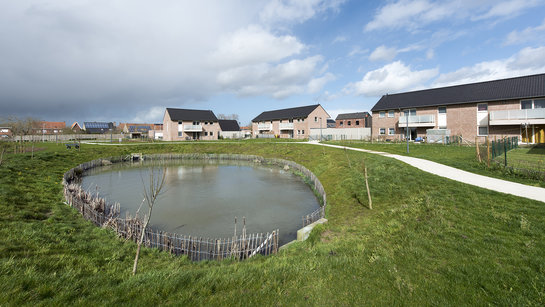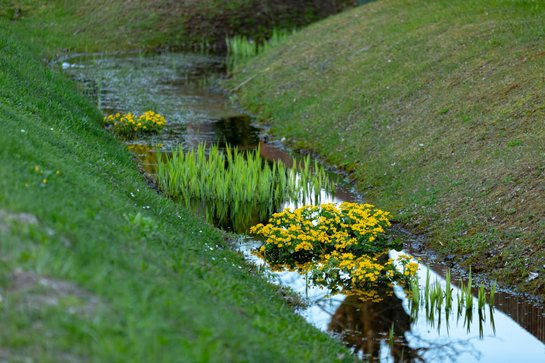A changing climate makes us think differently about how we use water. Despite the fact that Belgium has more than enough water to meet all our needs, Flemish soil is one of the driest in Europe. We also have to deal with greater extremes in our weather. Besides unseen cloudbursts, we are increasingly facing longer periods of dryness. Fortunately, we at Fluvius have a plan.
Reducing drinking water consumption
First of all, it is important to use drinking water more wisely. For example, it is not necessary to use drinking water for every application in and around the house. Flushing toilets, watering the garden or running the washing machine can be done just as well with rainwater. Fluvius therefore offers premiums to make families and local authorities consciously choose rainwater wells, and we raise awareness about smart use of drinking water. The digital water meter also has a role to play in this. Although we do not install it ourselves, we are committed by rolling it out together with our digital energy meters. After all, we are convinced that a better insight into your consumption helps you to be smarter about how you use water.
Infiltration
Since the invention of the gutter, sewers were primarily aimed at draining rainwater as quickly as possible. Now that the urbanisation of Flemish land is threatening to get out of hand, however, we realise that too little water still has a chance to infiltrate the soil and replenish the groundwater level.
Therefore, when constructing new sewers - or when converting existing ones - we look at where it is feasible to keep the rainwater in place for longer in, for example, a reservoir or a wadi for delayed infiltration. Moreover, in certain cases, these buffers can also serve as a reserve supply in periods of dryness.

Separated sewers
Naturally, you cannot fill up wadis or reservoirs with dirty wastewater. So at Fluvius we are fully committed to providing all our customers with a sewer connection (or, where this is not possible, an individual wastewater system) and, in the case of new systems, we only lay separate sewers. This ensures that dirty water flows through different pipes than rainwater. This not only makes rainwater much more usable for reuse and infiltration, separate sewers also help the efficiency of water treatment by not unnecessarily diluting wastewater.
Photo source: www.maxvandaag.nl

Reuse of wastewater
Currently, treated wastewater is discharged into our waterways. However, that water can be recovered to make up for our future shortages of raw water (untreated water). We also need to keep an eye on the flow rates of our streams and rivers. For example, it would be irresponsible to include treated water in our circular chain when it is needed to replenish vulnerable watercourses during dry periods.
Nevertheless, recycling 25 per cent of all our treated water could fill 40 per cent of our daily raw water shortages by 2070. A goal we are happy to work towards.
Digitisation and automation
Finally, we are also focusing on digitising our sewers. By thoroughly monitoring the use and operation of our grid and linking that data to weather forecasts and precipitation models, for instance, we will be able to target our investments even better and control our buffers smarter. But the acquired data can also be useful to others. Therefore, we want to make all known information available to users of the system, partners before and behind us in the chain and any third parties. In this way, we can work together to contain the effects of intense precipitation or warn residents in time of flood risk.